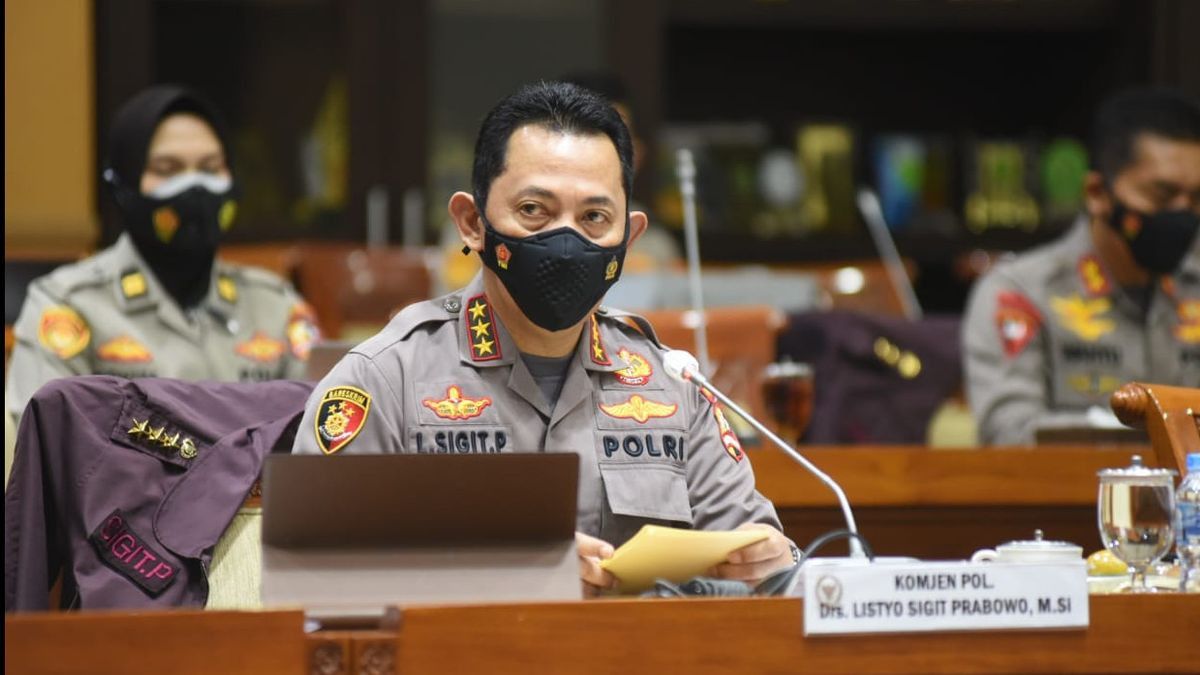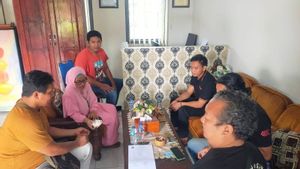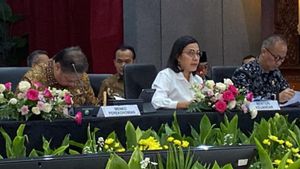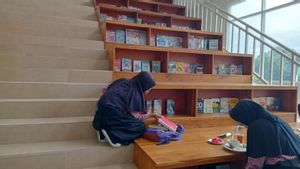JAKARTA - Komjen Listyo Sigit Prabowo presented a paper in the fit and proper test to Commission III of the DPR RI, Wednesday, January 20.
There is an interesting strategy described by Komjen Listyo as a way to prevent acts of terrorism if he is elected as the National Police Chief, which requires Polri members to study the Yellow Book.
"As before in Banten, I once said that members are obliged to study the Yellow Book because we received input from the scholars we visited. To prevent the development of terrorism, one of them is by studying the Yellow Book," explained Komjen Listyo.
After Komjen Lisyto explained his presentation, the Yellow Book would certainly become a public question, what is it? How is the content? Of course, for the boarding schools, it is not new because everyday they 'hang out' with the contents of this book.
However, those outside the lodge or adherents of other religions would ask questions. So, VOI editorial reported from NU Online, will provide a little understanding of the origin to the contents of the Yellow Book
The Yellow Book is a designation for the classic books by ancient scholars (salaf scholars). Kitab Kuning itself is one of the main references for teaching in Islamic boarding schools based on Nahdlatul Ulama (NU).
The mention of the Yellow Book itself refers to the physical form of these classical books. Because indeed the papers of various classical books have a yellowish color.
The contents of the Yellow Book include the sciences of Islam including sharah (a book containing comments), hasyiyah (comments on comments), translated books, and adaptations.
The characters written in the Yellow Book are Arabic letters without vowels. This has led some people in Java to call the Yellow Book a "bald book".
Even though it uses Arabic Script, there is a Yellow Book which contains comments, adaptations, or translations written in "Arabic Pego / Arabic Pegon" which refers to writing in Arabic Script but in Javanese.
It should be noted that the majority of the Yellow Book is in the form of nadhom or verse. It aims to make memorization easier. However, to read the book requires expertise ranging from Arabic grammar (nahwu and sharaf) to the special balaghah science of books in verse form.
Martin van Bruinessen revealed that the books containing the essence of Islamic teachings were written between the 10th and 15th centuries AD. Several books were written before that period and a number of works were also written after that period.
However, by the end of the 15th century Islamic thought had reached its peak and there was no significant development in the tradition of writing this book.
In the medieval tradition, all sciences were considered to be a limited system of knowledge and therefore adding to existing knowledge was considered inappropriate.
For this reason, the writing of books on Islamic religious knowledge can be summarized into 8 categories: completing what is incomplete, correcting what is wrong, explaining what is not clear, summarizing long works, compilation of various separate but related writings, compilation of writings that are not yet clear. irregular, and summaries of what was not previously summarized, as well as translations of earlier works.
The knowledge written in the yellow book is fixed. Even if there are new works, they remain within clear boundaries and are nothing more than summaries, explanations and comments of previously written matters.
This is what reformists and modernists consider to be the source of adolescence, although in practice the yellow book tradition is much more flexible than this assumption.
The tradition of writing this book is indeed rich and remains flexible precisely because it has no tendency to be the same or consistent.
In these classic books, differences of opinion are often found between one book and another regarding an issue. The teaching of the Kitab kuning in pesantren is based on oral transmission (oral teaching).
The texts in these books are read aloud by the kiai to his students who also hold the same book while making notes. Then the kiai makes comments and explains the meanings.
The students then read the book again while the kiai was checking its reading. A number of pesantren have started teaching books classically and applying standardized curricula, but a number of other pesantren have continued to apply the book teaching method as mentioned above.
After a student has completed a book, usually he will get a certificate from his kiya and be able to study other books.
The English, Chinese, Japanese, Arabic, and French versions are automatically generated by the AI. So there may still be inaccuracies in translating, please always see Indonesian as our main language. (system supported by DigitalSiber.id)













